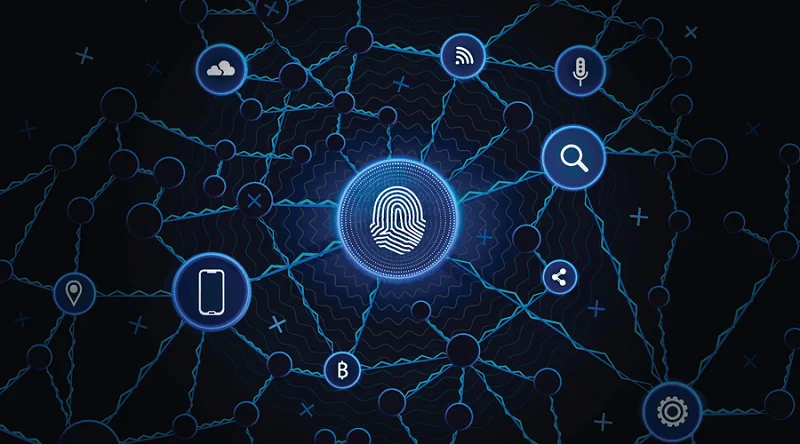Leverage an edge computing solution that nurtures the ability to innovate and can handle the diversity of equipment and devices in today’s marketplace. No matter which variety of edge computing interests you — cloud edge, IoT edge or mobile edge — be sure that you find a solution that can help you accomplish the following goals. The edge can be the router, ISP, routing switches, integrated access devices (IADs), multiplexers, etc. The most significant thing about this network edge is that it should be geographically close to the device. However, understanding the when, where, why, and how of edge computing can be tricky. Retail businesses also produce a huge chunk of data from sales details, surveillance footage, inventory IDs, and other business details.

You’ll therefore need to develop comprehensive security strategies to safeguard your edge computing infrastructure from potential threats. Edge computing allows you to compute with lower latency, save bandwidth, and use smart applications that implement machine learning and artificial intelligence. If an edge device fails, there is often no redundancy in place to maintain business continuity. The end-user would have to have a backup edge device connected to the same computational and storage services. In many situations, this kind of resiliency plan would be prohibitively expensive.
Reduce Bandwidth Requirements
Cloud providers can localize the cloud services so that computing takes place on edge servers local to the company’s required region. Companies put storage, servers, and other edge devices next to the data source. For example, an energy company might install some server racks and a remote LAN within a wind turbine to collect and process the data it generates. Edge computing often takes place in remote areas where internet connectivity is scarce.
They require real-time data processing for instant response and cannot rely on a remote server for split-second decision-making. The high speeds and low latency of data transfer, combined with the relative ease of installing edge devices, have seen edge computing widely what is embedded systems used across industries. Edge computing continues to evolve, using new technologies and practices to enhance its capabilities and performance. Perhaps the most noteworthy trend is edge availability, and edge services are expected to become available worldwide by 2028.
Safer Data Processing
Businesses are responding to these data challenges through the use of edge computing architecture. Smart speakers, watches and phones all use edge computing to collect and process data while touching the physical world. IoT devices, point of sales (POS) systems, robots, vehicles and sensors can all also be edge devices if they compute locally and talk to the cloud.

Companies like Netflix, Spotify and other SaaS companies have even built their entire business models on the concept of cloud computing. The biggest problem of cloud computing is latency because of the distance between users and the data centers that host the cloud services. This has led to the development of a new technology called edge computing moves computing closer to end users.
VMware Edge Compute Stack
On the factory floor, Internet of Things (IoT) sensors generate a steady stream of data that can be used to prevent breakdowns and improve operations. By one estimate, a modern plant with 2,000 pieces of equipment can generate 2,200 terabytes of data a month. It’s faster—and less costly—to process that trove of data close to the equipment, rather than transmit it to a remote datacenter first. But it’s still desirable for the equipment to be linked through a centralized data platform.
Edge reduces latency, meaning it lowers response time by doing the work close to the source instead of sending it to the more distant cloud and then waiting for a response. Bringing online data and algorithms into brick-and-mortar stores to improve retail experiences. Creating systems that workers can train and situations where workers can learn from machines. What these examples all have in common is edge computing, which is enabling companies to run applications with the most critical reliability, real-time and data requirements directly on-site. Ultimately, this allows companies to innovate faster, stand up new products and services more quickly and opens up possibilities for the creation of new revenue streams. Take advantage of managed hardware deployed in locations outside AWS data centers— extending secure edge computing capabilities to metro areas, 5G networks, on-premises locations, and disconnected or remote locations.
What Are the Disadvantages of Edge Computing?
Accenture’s Jennifer McLaughlin and Teresa Tung discuss how 5G, edge and cloud will impact all industries in the coming decade. Network modernization can yield greater business resiliency and cost efficiency, creating a ripple effect of innovation. The reduction in latency enables retail stores to create a rich, interactive online experience for their customers. Store owners can create an augmented reality for online shopping with seamless performance and allow shoppers to purchase goods from home. Learn about dedicated servers for gaming, servers that allow players to customize and control their gaming experience. Clients receive 24/7 access to proven management and technology research, expert advice, benchmarks, diagnostics and more.

One of the most cutting-edge applications of edge is frictionless store checkout in retail, allowing customers to pick up items off the shelves and walk out the door, getting checked out without waiting in line. What makes edge so exciting is the potential it has for transforming business across every industry and function. Brick-and-mortar retailers can also use edge computing to set up virtual reality shopping assistants in stores. Finally, as current standards are evolving rapidly, a company may struggle with keeping setups up to date.
Which industries use edge computing?
When selecting a platform, it is necessary to target the ones with simplified security and lesser downtime. One of the critical requirements for online as well as cloud gaming (a type of gaming that streams the live feed of the game directly to devices) requires high-speed functioning. These often struggle with high lag and latency issues, causing major delays in gamers’ reactions. Edge computing can benefit gaming by creating edge servers closer to the gamers, thereby reducing latency and providing a rich and immersive gaming experience. It enables data localization and ultra-low latency and addresses security and privacy concerns, thereby reducing the load on networks.
- By setting up an edge computing environment, enterprises ensure that their operations reliably process, analyze, and store data.
- No matter which variety of edge computing interests you — cloud edge, IoT edge or mobile edge — be sure that you find a solution that can help you accomplish the following goals.
- For example, an energy company might install some server racks and a remote LAN within a wind turbine to collect and process the data it generates.
- However, a clear distinction needs to be made between devices with computer power and edge computing serving many devices simultaneously.
- Only the first vehicle will require a driver as the remaining cars can follow the first one and communicate without latency.
- From cable to streaming, the means of consuming content have rapidly changed over the years.
David S. Linthicum is an internationally recognized industry expert and thought leader. He has authored 13 books on computing, the latest of which is An Insider’s Guide to Cloud Computing. However, we may be at innovation saturation and need to focus on expansion and operations.
What happened to edge computing?
Edge computing optimises Internet devices and web applications by bringing computing closer to the source of the data. This minimises the need for long-distance communications between client and server, which reduces latency and bandwidth usage. Some of the most simple forms of edge computing involve basic events and straightforward processes. For example, a device that can monitor someone’s pulse and blood pressure can be positioned on their body and then send information to an edge-based server. Only certain information is then sent to the cloud, while most of it is handled within the edge network. Cloud-native approaches are often employed in a distributed computing environment to tackle issues originating from inconsistent development platforms and security frameworks.
Simplilearn is one of the world’s leading providers of online training for Digital Marketing, Cloud Computing, Project Management, Data Science, IT, Software Development, and many other emerging technologies. In the old days, we had one big, central machine that people logged in to in order to take advantage of computational power. Users would connect to this central device and use it to perform tasks and then disconnect.
Why is edge computing important?
Edge computing is driving the innovation of autonomous vehicles as it promises zero latency. Delays in information in this regard could be all the difference between endangering a life and saving one. For many companies, cost savings alone can be a driver to deploy edge-computing.
